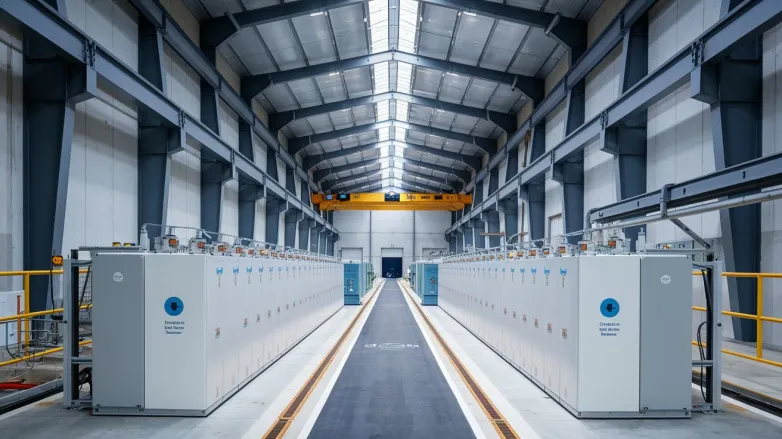Schleswig-Holstein Launches €6M Boost for Energy Storage Investments
- Schleswig-Holstein invests €6 million to supercharge energy storage projects, boosting renewable energy efficiency with grants up to 50% for small enterprises. Empowering a sustainable future!

Schleswig-Holstein is investing EUR 6 million from the European Regional Development Fund, supplemented by EUR 1.5 million in state funds, to promote energy storage projects. New funding guidelines aim to expedite the construction of storage facilities, incentivizing investment in systems that source at least 75% of their energy from connected solar or wind projects.
Eligible projects must have total costs between EUR 200,000 and EUR 10 million, offering grants of up to 40% for medium-sized enterprises and 50% for small enterprises. The initiative addresses energy supply challenges in the region, where renewable sources often generate excess energy that cannot be utilized.
How will Schleswig-Holstein's funding impact energy storage and renewable project investments?
- Enhanced Investment Appeal: The substantial funding from the European Regional Development Fund and state sources makes Schleswig-Holstein an attractive hub for energy storage investments. The financial incentives will likely draw both local and international investors looking to capitalize on renewable energy opportunities.
- Focus on Local Projects: By prioritizing storage systems that primarily draw energy from local solar and wind projects, the funding encourages the development of homegrown energy solutions, creating a more autonomous and resilient energy infrastructure in the region.
- Support for Enterprises: Providing differentiated funding levels based on enterprise size (up to 50% for small enterprises and 40% for medium-sized enterprises) will empower smaller businesses to participate in the renewable energy sector, fostering innovation and competition.
- Job Creation: The investment is expected to create jobs in the renewable energy and construction sectors as new storage facilities are built. This can significantly contribute to regional economic growth and provide local employment opportunities.
- Synergy between Storage and Generation: The initiative will enhance the synergy between energy generation and storage, potentially increasing the efficiency and reliability of energy systems. This alignment can help address the intermittent nature of renewable sources and ensure a more consistent energy supply.
- Acceleration of Transition Goals: The initiative aligns with broader strategic goals for energy transition in Schleswig-Holstein, helping to meet regional and national renewable energy targets, thus contributing to Germany’s commitment to reduce greenhouse gas emissions.
- Encouraging Technological Advancements: By investing in storage projects, the funding may facilitate the adoption of new technologies in energy storage solutions, driving innovation and speeding up the development of advanced systems that can store excess energy more effectively.
- Reinforcement of Local Grid Infrastructure: Increased energy storage capabilities can relieve pressure on local grid systems during peak production periods, enhancing grid stability and reducing the risk of outages while facilitating the integration of increasing renewable energy capacity.
- Community Engagement and Awareness: With funding dedicated to local projects, communities are likely to become more engaged in energy initiatives, fostering public awareness and support for renewable energy ventures, which can lead to greater acceptance and participation among residents.
- Potential for Future Funding: The success of the initial funding model could lead to further investments and funding programs in the future, catalyzing ongoing growth in the energy storage and renewable sectors within Schleswig-Holstein and possibly beyond.
- Mitigation of Energy Supply Challenges: By addressing the issue of excess energy generation, the funding not only aims to optimize the use of renewable resources but also helps to ensure that renewable energy is more reliably utilized, contributing to a sustainable energy future.
Also read
- Petrobras, Lightsource bp Forge Brazil Solar JV
- Soltage raises $80m debt to expand U.S. solar and storage pipeline
- Encavis secures €200m UniCredit loan to buy 265-MW Italian PV
- Voltalia prepares site for 43-MW solar-storage hybrid in French Guiana
- Google Secures 21-Year Malaysian Solar for Data Hubs

